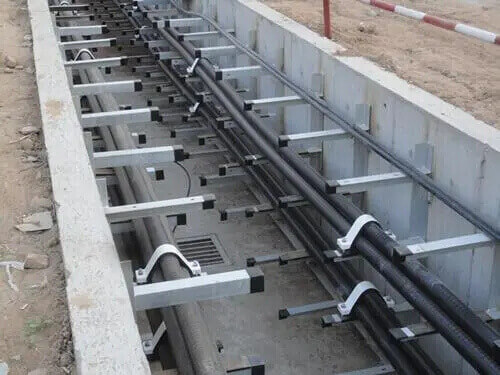Direct Burial Laying
Advantages:
Small investment, convenient construction, and good heat dissipation conditions.
Disadvantages:
Easy to be damaged by mechanical forces, chemical or electrochemical corrosion of the surrounding soil, termite and rat hazards, difficult to find faults and repair cables.
Applicable environment:
There are no obstacles underground. The soil does not contain severely corrosive media such as acid, alkali and salt. And the cable number is less.
Voltage level:
Generally suitable for the laying of medium and low voltage cables. Armoured cables of 35kV and below are generally laid directly buried.

Cable Duct Laying
Advantages:
The cable is not susceptible to external mechanical damage, takes us little space, and runs reliably. In addition, there is no need to dig us the road surface to remove old ones for renewal or lay new cable lines.
Disadvantages:
The construction is complicated and the construction period is long. It is inconvenient to replace cables and the maintenance cost is high. Poor heat dissipation affects the cable carrying capacity.
Applicable environment:
When multiple cables are laid on the main line of an urban block and it is not suitable to build cable trenches and cable tunnels, duct laying can be used.
Cable Trench Laying
Advantages:
Cables are not susceptible to external mechanical damage,occupy relatively small space, and cable maintenance and repairs are relatively simple.
Disadvantages:
The construction is complex, the cycle is long. And the heat dissipation conditions of the cables in the cable trench are poor.
Applicable environment:
It is suitable for places where multiple cables are installed in parallel. The cable line should not be laid in areas where the groundwater lever is too high.


Please contact us for a free quotation by the below form. We promise the quickest response within 8 hours.